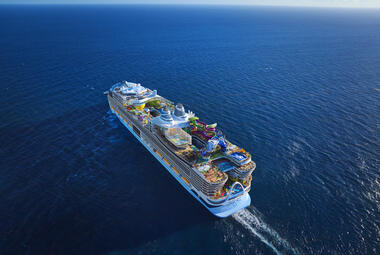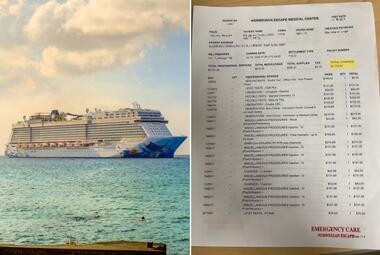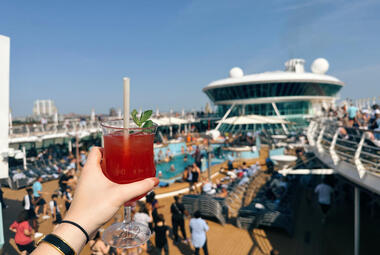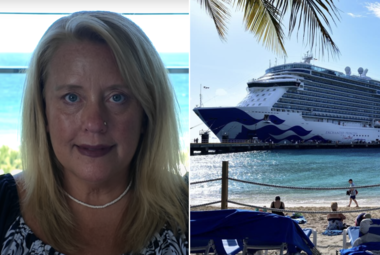No ship in history has captured the world's imagination quite like the Titanic, with its tragic story etched into collective memory spawning countless documentaries, movies, and even museums.
On April 14, 1912, the RMS Titanic sank after hitting an iceberg on its maiden voyage from Southampton, England, to New York. Dubbed "unsinkable," the infamous ocean liner claimed the lives of over 1,500 passengers and crew, despite her builders asserting she could stay afloat for two to three days in the event of a major accident.
Through survivor accounts, historians and media were able to piece together a detailed narrative of the disaster—from the desperate scramble for lifeboats to the final moments before the ship sank beneath the Atlantic.

Perhaps fueled by one of the most intense and chaotic moments from the 1997 movie in which the ship's stern rises out of the water while the bow sinks deeper, "Why did the Titanic break in half?" is a popular question over 100 years later.
Advances in engineering have provided some answers, revealing that when the ship's hull was critically damaged by the iceberg, the design of the Titanic, combined with the stress of the collision and major seawater flooding, led to the breakage.
Within minutes of hitting the iceberg, the Titanic had taken on thousands of tons of water
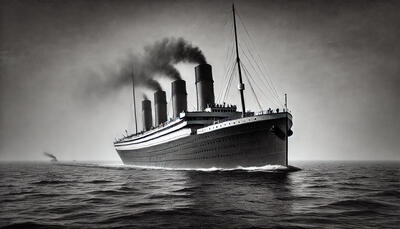
This overwhelmed the watertight compartments on the lower decks and caused the ship to drastically list, with ocean water flooding six of her sixteen major watertight compartments.
In short, the damage caused to the ship, which was designed to compartmentalize flooding, resulted in the Titanic snapping in half. As water filled the damaged compartments, the ship started to tilt forward, containing the water to the bow and increasing the rate of sinking.
Though any ship that took on that much seawater in its hull would be almost guaranteed to sink, the pressure typically wouldn't be great enough to cause a vessel to break. Titanic's breakage wasn't a direct result of the seawater, but rather the ship's size and design flaw that weakened part of the hull.

RMS Titanic broke between the ship's third and fourth funnels, the stacks that supported the enormous steam engine. As such, this section of the hull was weaker than the others because the design couldn't accommodate a necessary expansion joint.
Additionally, recent studies argue the steel used to build the ship's hull contained large quantities of sulfur, making it more brittle in lower temperatures. The rivets used to fasten the hull seared off or the heads popped off on impact, opening the riveted seams.
Read more: How much was a first class ticket on the Titanic?
For over 70 years, survivors were told the ship didn't break in half
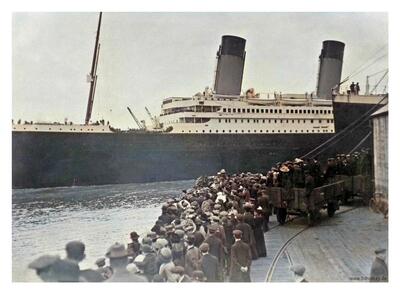
"I didn't close my eyes at all. I saw that ship sink, and I saw that ship break in half," said Titanic survivor Eva Hart in a video posted on YouTube, "And for so many years, people have argued with me about that, but now, at least, it has been proven beyond all doubt that she did break it half."
For over seven decades, survivors were told they didn't remember the events correctly. Though plenty of survivors—both passenger and crew—testified that the ocean liner did break, a handful of witnesses claimed it didn't. Charles Lightroller, the Titanic's Second Officer and most senior crew member to survive, was one of them, as reported by Biography.com.
It wasn't until RMS Titanic's wreckage was discovered in 1985 that the ship's split was proven.
Read more: How Cold Was The Water When The Titanic Sank?
Though small compared to today's mega-ships, the Titanic was the largest passenger ship ever built at the time

Coming in at 882 feet long with a capacity of over 3,300 passengers and crew, the Titanic wasn't a small vessel; however, compared to ships like Icon of the Seas, which measures nearly 1,200 feet in length and can accommodate more than 9,000 passengers and crew, the Titanic seems far more modest.
The advancements in shipbuilding technology and design have allowed for larger and more complex cruise ships, featuring amenities like roller coasters, go-kart tracks, ice skating rinks, rock climbing walls, and more.
Not only that, but ships are far safer today with advanced navigation systems and safety protocols that weren't in place during the Titanic's maiden voyage.
Read more: The "unsinkable" Titanic compared to a cruise ship today
Following the sinking of the Titanic, an international treaty called SOLAS (Safety of Life at Sea) was formed
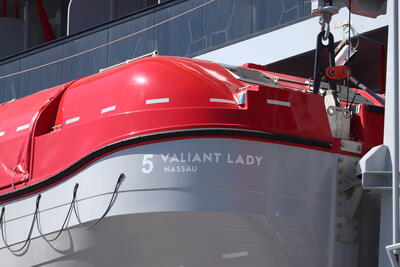
The Titanic sank below the icy waters of the Atlantic less than three hours after the collision. With just 20 lifeboats onboard—more than the legal requirement at the time—only around 700 out of the 2,224 people on the voyage survived the harrowing tragedy.
Two years later, Safety of Life at Sea (or SOLAS) was established to prevent another major disaster from occurring by setting rigorous safety standards for the construction and operation of passenger and cargo ships.
Now, ships must have enough lifeboats for all passengers and crew onboard, and they must conduct regular safety—or muster—drills to ensure everyone is familiarized with their assigned assembly stations and other important protocols.

Lifeboats today are far different from the wooden lifeboats of the Titanic era. Instead, they are designed to withstand severe weather conditions and are equipped with high-tech safety features, emergency supplies, and more.
For example, according to the International Maritime Organization's International Life-Saving Appliance Code, you'll find enough fuel to travel at 6 knots for 24 hours, 2 seasickness bags per person, 2,390 calories' worth of food rations per person, first aid supplies, smoke signals, and more on today's lifeboats.
In addition to SOLAS, which also required higher-grade materials to be used during the construction process, the breakage of the Titanic led to the implementation of new standards and manufacturing processes for shipbuilders, as nobody wanted to be responsible for another maritime disaster.
It's unlikely that modern vessels would snap in half like the Titanic

Between improvements to ships' structural integrity with reinforced hulls, advanced watertight compartmentalization procedures, and better safety regulations, modern cruise ships are built to withstand hull-splitting disasters like the one that doomed the Titanic.
In fact, there have been no other records of ocean liners or cruise ships breaking in half because of collisions with an object since 1912. Though maritime disasters have continued to occur, none have been as deadly as the Titanic thanks to improved designs and safety regulations.
Read more: What did people on the Titanic eat onboard?





